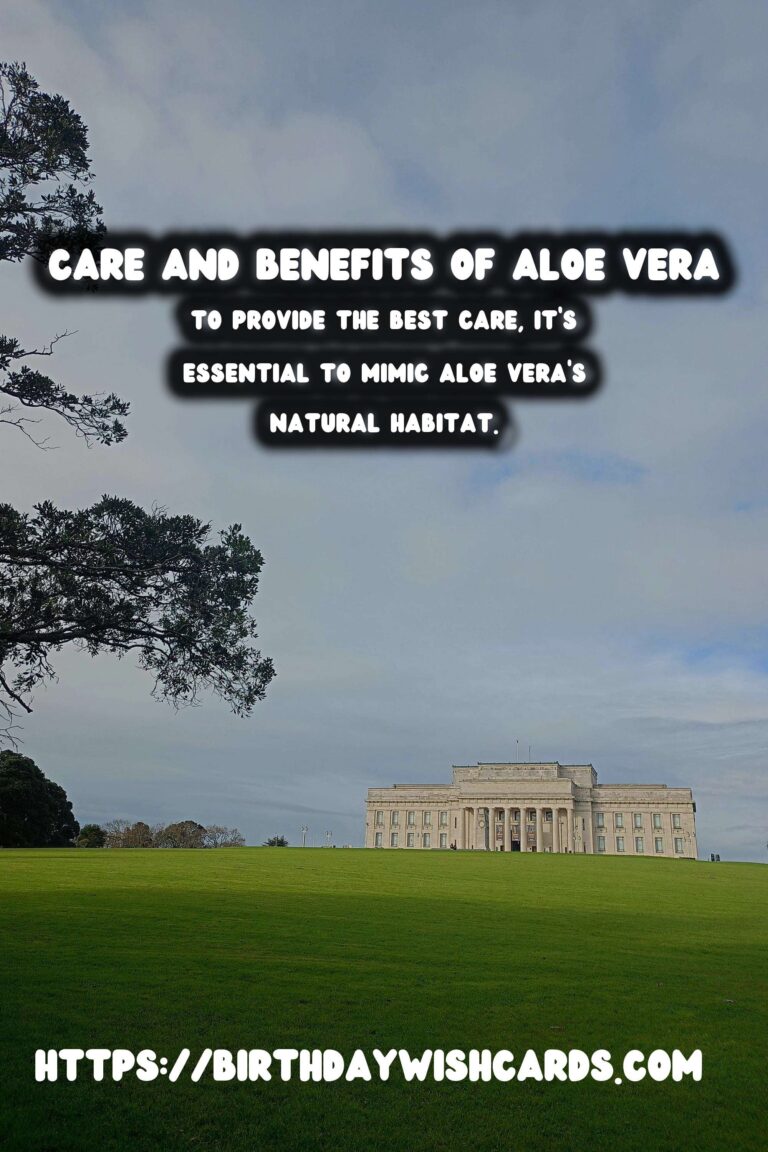
Aloe Vera, a succulent known for its therapeutic properties, has been used in traditional medicine for centuries. Its popularity continues to rise, thanks to its diverse applications ranging from skincare to health supplements. In this comprehensive guide, we’ll explore how to properly care for this extraordinary plant, ensuring it thrives and remains a beneficial part of your life.
Understanding Aloe Vera
Aloe Vera is a hardy plant that originates from the Arabian Peninsula but thrives in various climates worldwide. It’s revered not only for its healing gel but also for its ability to grow under minimal care.
Natural Habitat
To provide the best care, it’s essential to mimic Aloe Vera’s natural habitat. This plant flourishes in warm, dry environments with ample sunlight. Although adaptable, recreating these conditions at home will help your Aloe Vera plant thrive.
How to Care for Your Aloe Vera Plant
Many people mistakenly believe that succulents do not require much maintenance. However, like any living organism, they need proper attention and care. Follow these guidelines to ensure your Aloe Vera remains healthy.
Location and Sunlight
Place your Aloe Vera in a location where it can receive plenty of natural light. A south- or west-facing window is ideal. Direct sunlight is beneficial, but too much harsh light can cause the leaves to burn, especially in hotter climates.
Watering Needs
Aloe Vera belongs to a category of plants that stores water in its leaves, which means it requires less frequent watering. The key is to let the soil dry out completely between waterings. Overwatering is a common mistake and can lead to root rot.
During the growing season, typically spring and summer, watering every 3 weeks should suffice. In the cooler months, reduce this frequency significantly.
Soil and Potting
Proper drainage is crucial for Aloe Vera. Use a cactus potting mix or create your own by adding perlite or sand to regular potting soil. Additionally, ensure your pot has drainage holes to prevent water buildup.
Temperature and Humidity
Being native to desert climates, Aloe Vera prefers temperatures between 55°F and 80°F. It can survive short periods of cooler temperatures, but bringing it indoors during freezing weather is advisable.
Medicinal Benefits of Aloe Vera
The gel extracted from Aloe Vera leaves is renowned for its healing properties. It’s commonly used to treat minor cuts, burns, and skin irritations. Moreover, Aloe Vera’s internal uses include benefits for digestion and boosting immunity.
Topical Uses
Aloe Vera gel is a go-to solution for sunburn, thanks to its soothing and anti-inflammatory properties. It also serves as a moisturizing agent that can rejuvenate dry skin and promote a healthy complexion.
Internal Uses
Though its external uses are more prevalent, Aloe Vera can also be consumed. It contains compounds that support digestive health and help relieve constipation. However, it’s crucial to consume the plant safely and in moderation.
Propagation and Growth
One of the rewarding aspects of growing Aloe Vera is its ease of propagation. As the plant matures, it often produces offsets or ‘pups’. These can be replanted to grow new Aloe Vera plants.
Steps to Propagate
Once the offsets are a few inches tall, carefully remove them from the parent plant using a clean, sharp knife. Allow the pup to dry for a few days to form a callous over the cut before planting it in soil. This process prevents rot and encourages healthy growth.
Common Pests and Solutions
Aloe Vera is relatively pest-resistant. However, occasional issues may arise, such as mealybugs or aphids. If noticed, these pests can be managed with natural solutions like neem oil sprays.
Conclusion
Proper care of Aloe Vera not only ensures a thriving plant but also provides you an ongoing source of healing benefits. Enjoy the journey of nurturing this remarkable medicinal plant, balancing the essentials of light, water, and care. Its legacy of healing and happiness will undoubtedly enrich your life.
Aloe Vera, a succulent known for its therapeutic properties, has been used in traditional medicine for centuries. To provide the best care, it’s essential to mimic Aloe Vera’s natural habitat. 









#AloeVera #MedicinalPlant




